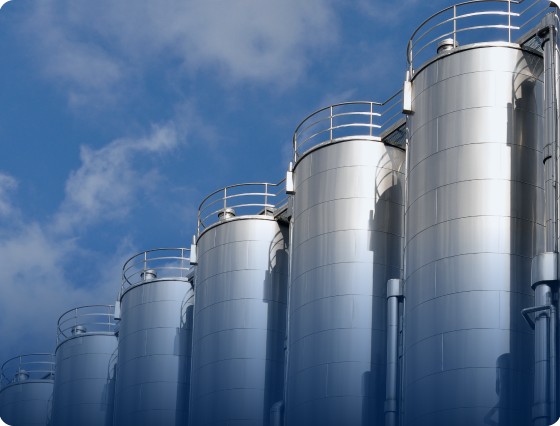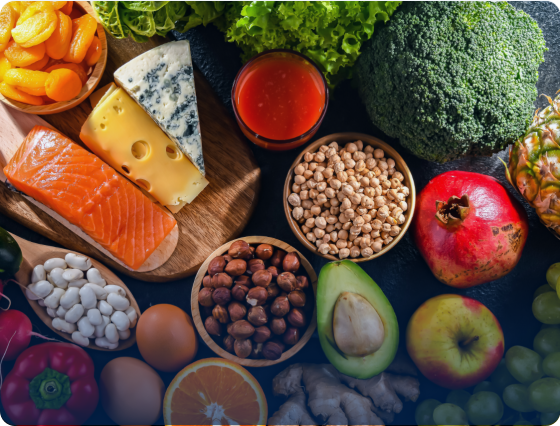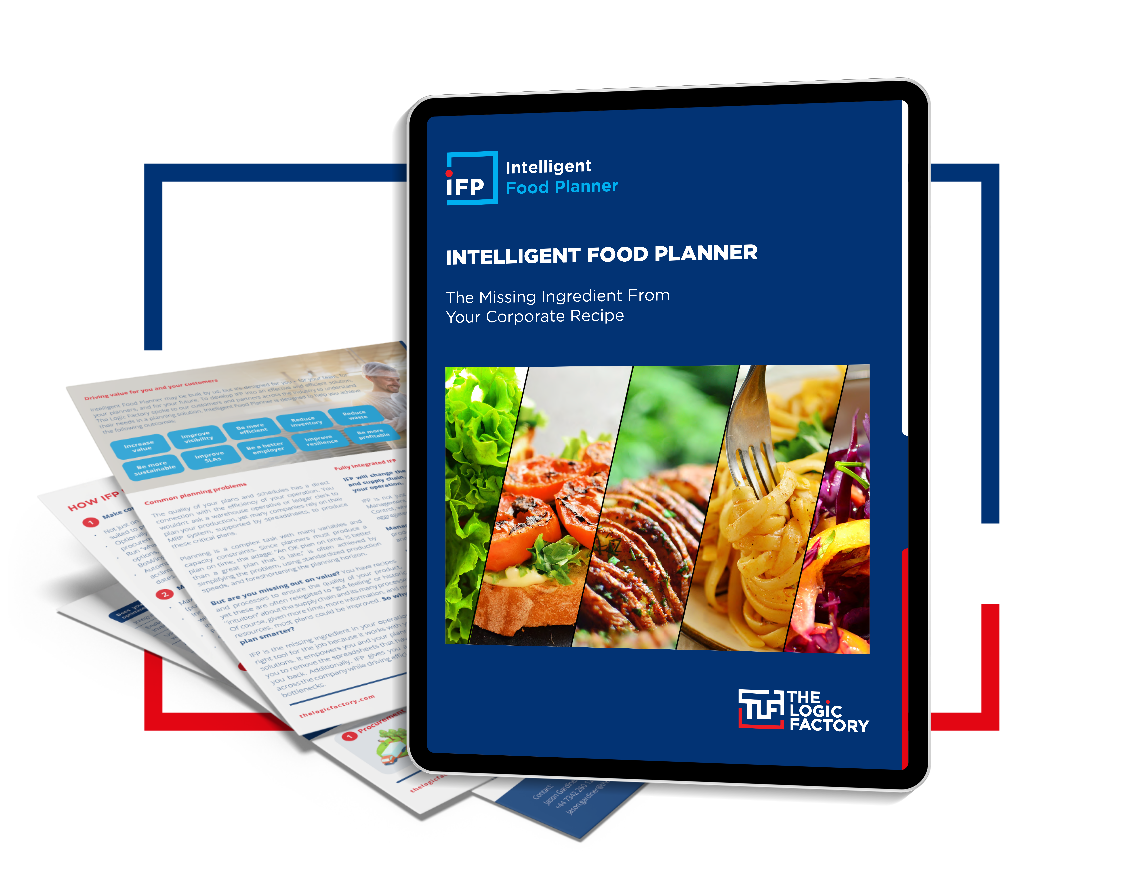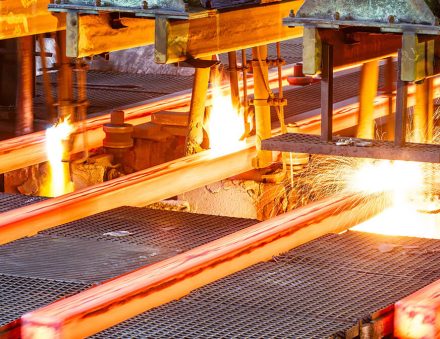

Intelligent Supply Chain Planning in Food & Beverage Manufacturing
What our customers say about us
The challenge
The food and beverage industry is uniquely complex, with its diverse products, recipes, and regulations. As producers, you often have to balance variance in costs, quality, and supply availability against existing demand and future trends. With the rising cost of raw materials and the drive for sustainability, you also need to adapt your recipes while providing high standards of quality and service to your customers.
Legacy solutions and processes can no longer be relied upon for overcoming such challenges. With the help of advanced supply chain planning solutions and our implementation and industry expertise, you can identify and address gaps and bottlenecks in your supply chain while making it more resilient and agile. Let’s walk through some common operational challenges and how you could solve them.
-
SituationYou rework plans at every level of the supply chain, resulting in inefficiency, higher costs, and reduced agility.
-
ComplicationYou use spreadsheets to fill the gaps between planning tools. Consequently, each level has its own set of KPIs and data.
-
QuestionHow can you achieve a consistent, high-quality plan where everyone understands their goals?
-
Answer
Implementing an integrated planning solution will improve your data quality and enable every planner to work towards the same KPIs and goals.

-
SituationEach function in your supply chain works in isolation with no visibility of how their decision impacts other parts of your operations.
-
ComplicationDue to isolated decision-making across the supply chain, each function’s plan becomes more complex and less efficient.
-
QuestionHow can you help your planners focus on the big picture and not on their individual silos?
-
Answer
If you adopt a holistic approach toward your planning, your planners will make better decisions as they can see the impact of their actions across all functions.

-
SituationYou’re facing consistent increases in prices and reduced margins.
-
ComplicationTo maximize your margin, you and your planners are forced to consider a wider and more complex set of options.
-
QuestionHow can you maximize margin and minimize waste?
-
Answer
An advanced solution with an optimizer like Intelligent Food Planner will help your planners balance KPIs and consider millions of options, producing the best plan for your business.

-
SituationYou want to keep up with the latest trends and customer demands, so you create new recipes and bring products to market faster than you’ve had to before.
-
ComplicationYou’re facing increased planning complexity because of introducing or terminating products. This is exacerbated due to changing inventory levels.
-
QuestionHow can you ensure that your planning and procurement teams prevent the creation of obsolete stock when products change?
-
Answer
Intelligent Food & Beverage Planning ensures that you meet your customers’ SLAs while dynamically adjusting stock requirements based on demand and cutovers.

-
SituationYou still need to deliver high-quality products to match customer expectations even though prices of raw materials have increased and their availability is unpredictable.
-
ComplicationCustomers want a clean ingredient list and a long shelf life while needing to control their expenditures.
-
QuestionHow do you maintain the quality of taste and feel while controlling the cost of production?
-
Answer
Your planning solution needs to choose the best options from variable Bills of Material (BoM) and ingredient lists to ensure product quality at minimum cost.

-
SituationYour supply chain planning is often reactive. For example, inbound raw materials are of a different grade, or resources are unavailable.
-
ComplicationYour planners need to make interconnected decisions. For example, they must fulfill demand (pull planning) while using raw materials before expiry (push planning) without having time to validate all viable options.
-
QuestionHow can you help your planners make better, more consistent decisions, reduce errors, and missed opportunities?
-
Answer
You need to support your planners with the correct tools to make better, quicker decisions, considering a far greater range of options than possible when planning manually.

-
SituationYou rework plans at every level of the supply chain, resulting in inefficiency, higher costs, and reduced agility.
-
ComplicationYou use spreadsheets to fill the gaps between planning tools. Consequently, each level has its own set of KPIs and data.
-
QuestionHow can you achieve a consistent, high-quality plan where everyone understands their goals?
-
Answer
Implementing an integrated planning solution will improve your data quality and enable every planner to work towards the same KPIs and goals.

-
SituationEach function in your supply chain works in isolation with no visibility of how their decision impacts other parts of your operations.
-
ComplicationDue to isolated decision-making across the supply chain, each function’s plan becomes more complex and less efficient.
-
QuestionHow can you help your planners focus on the big picture and not on their individual silos?
-
Answer
If you adopt a holistic approach toward your planning, your planners will make better decisions as they can see the impact of their actions across all functions.

-
SituationYou’re facing consistent increases in prices and reduced margins.
-
ComplicationTo maximize your margin, you and your planners are forced to consider a wider and more complex set of options.
-
QuestionHow can you maximize margin and minimize waste?
-
Answer
An advanced solution with an optimizer like Intelligent Food Planner will help your planners balance KPIs and consider millions of options, producing the best plan for your business.

-
SituationYou want to keep up with the latest trends and customer demands, so you create new recipes and bring products to market faster than you’ve had to before.
-
ComplicationYou’re facing increased planning complexity because of introducing or terminating products. This is exacerbated due to changing inventory levels.
-
QuestionHow can you ensure that your planning and procurement teams prevent the creation of obsolete stock when products change?
-
Answer
Intelligent Food & Beverage Planning ensures that you meet your customers’ SLAs while dynamically adjusting stock requirements based on demand and cutovers.

-
SituationYou still need to deliver high-quality products to match customer expectations even though prices of raw materials have increased and their availability is unpredictable.
-
ComplicationCustomers want a clean ingredient list and a long shelf life while needing to control their expenditures.
-
QuestionHow do you maintain the quality of taste and feel while controlling the cost of production?
-
Answer
Your planning solution needs to choose the best options from variable Bills of Material (BoM) and ingredient lists to ensure product quality at minimum cost.

-
SituationYour supply chain planning is often reactive. For example, inbound raw materials are of a different grade, or resources are unavailable.
-
ComplicationYour planners need to make interconnected decisions. For example, they must fulfill demand (pull planning) while using raw materials before expiry (push planning) without having time to validate all viable options.
-
QuestionHow can you help your planners make better, more consistent decisions, reduce errors, and missed opportunities?
-
Answer
You need to support your planners with the correct tools to make better, quicker decisions, considering a far greater range of options than possible when planning manually.

Secure long-term success with intelligent planning
Attain one version of the truth
Break down information silos that hinder your visibility. Make decisions confidently by knowing that it’s the right option for the whole business by locking your corporate KPIs into every planning decision.
Forecast confidently with what-if scenarios
You can avoid reactive planning by modeling changes - working patterns or product ranges - before implementing them. Using a virtual twin of your operation will help you better manage volatility and disruption in your supply chain, increasing agility and reducing the cost of change.
Always have a quality plan
As you can plan for longer horizons, you can stabilize the plan quality not just for today but for any day, irrespective of the complexity of the plan. You can also identify markets where future co-produced products can provide additional value and use variable BoMs to enable minimum-cost production while maintaining quality.

Intelligent Food Planner
How can you plan faster, smarter, and better in the ever-evolving food and beverage industry? Your first step would be to use our Intelligent Food Planner. Read our brochure to see why.



